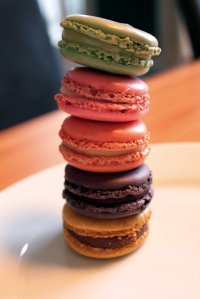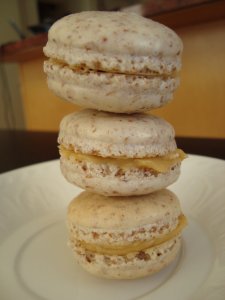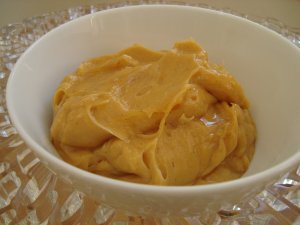Heat it over low-medium heat to 86 degrees (in the picture, the thermometer had already cooled back down…don’t refer to the picture. 86 degrees is what you want).
Mix in your fromage blanc starter culture.
Cover the pot, set it aside, and wait 12 hours. I always get this started at night before heading to bed.
The next morning, the fromage blanc will look like this. The milk has thickened up and separated from the sides of the pot.
This kind of colander is perfect for straining fromage blanc because it fits right inside my large bowl, which supports the bottom of the butter muslin over a large surface area and facilitates drainage.
Put the colander in your bowl.
Cover the bowl with butter muslin.
Ladle the cultured milk into the butter muslin.
This is halfway through ladling. A lot of the whey has mixed back into the curds, but that’s okay. It will drain out soon enough.
Now put the bowl in the refrigerator. Periodically remove it to drain out the whey at the bottom of the bowl. Early on, you need to do this every few minutes. After 15 or so minutes, you’ll be able to only check on it every 30 minutes or so. It will need to drain for 3-6 hours (depending on the kind of milk you used. I find that less fat= faster drainage, because there are less curds).
You’re almost done! I used 2% milk for this batch and it ended up draining a bit too much, which resulted in a not-smooth-enough-for-my-french-blood fromage blanc. I just threw it into my mixer with the whisk attachment. I whipped it on medium speed and added a bit of milk to help smooth it out.
Here is the finished fromage blanc! Serve with whatever fruit suits your fancy.
Note: This post brought to you by Bastille Day. Because what Bastille Day would be complete without a tasty French dessert like fromage blanc?
Happy Bastille Day!!





































